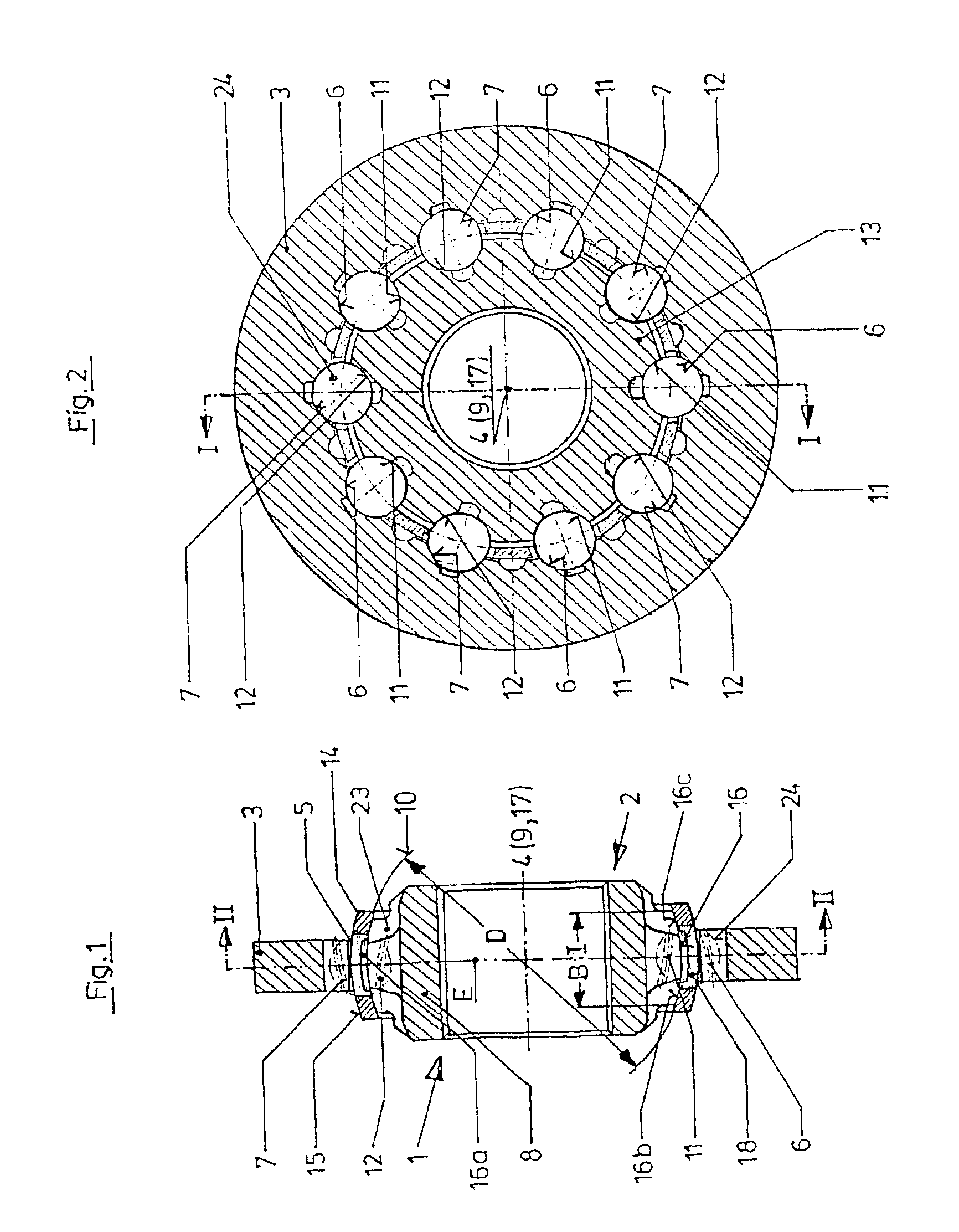Homocinetic joint
a technology of homocinetic joints and joints, applied in the direction of clutches, yielding couplings, rotary machine parts, etc., can solve the problem of low friction operating conditions
- Summary
- Abstract
- Description
- Claims
- Application Information
AI Technical Summary
Benefits of technology
Problems solved by technology
Method used
Image
Examples
Embodiment Construction
[0020]FIGS. 1 and 2 will be described jointly below. To be able to explain the way in which the parts are associated with one another and aligned relative to one another, the first end of the constant velocity joint has been given the reference number 1 and the second end the reference number 2. “End” does not refer to a definite end at a particular line or at a particular point, but it refers to the individual parts, taking into account their alignment and configuration.
[0021]The constant velocity joint is a fixed joint and comprises an outer part 3 with an aperture 5 which is centered on the longitudinal axis 4 of the outer part and extends through the outer part 3. In the aperture 5, there are arranged first outer running grooves 6 which are circumferentially distributed around the longitudinal axis 4 of the outer part and which start from the first end 1 in an undercut-free way, i.e. they extend curve-like. There are provided second outer running grooves 7 which alternate with t...
PUM
 Login to View More
Login to View More Abstract
Description
Claims
Application Information
 Login to View More
Login to View More - R&D
- Intellectual Property
- Life Sciences
- Materials
- Tech Scout
- Unparalleled Data Quality
- Higher Quality Content
- 60% Fewer Hallucinations
Browse by: Latest US Patents, China's latest patents, Technical Efficacy Thesaurus, Application Domain, Technology Topic, Popular Technical Reports.
© 2025 PatSnap. All rights reserved.Legal|Privacy policy|Modern Slavery Act Transparency Statement|Sitemap|About US| Contact US: help@patsnap.com



